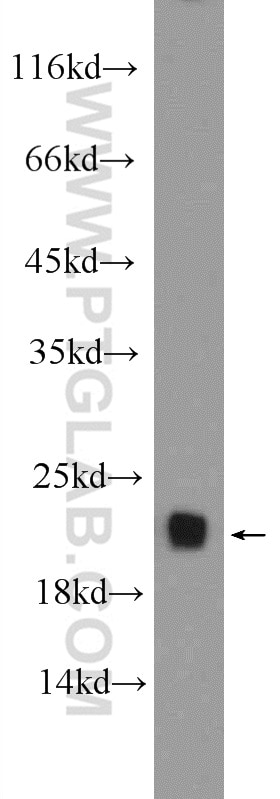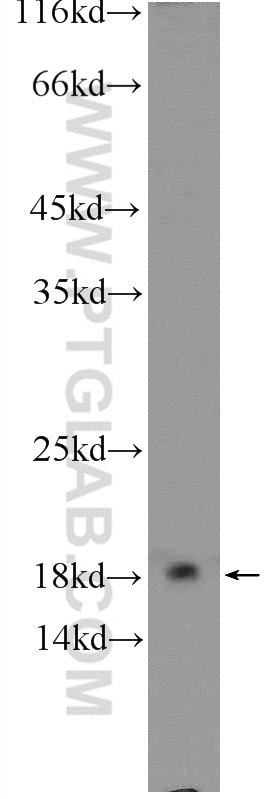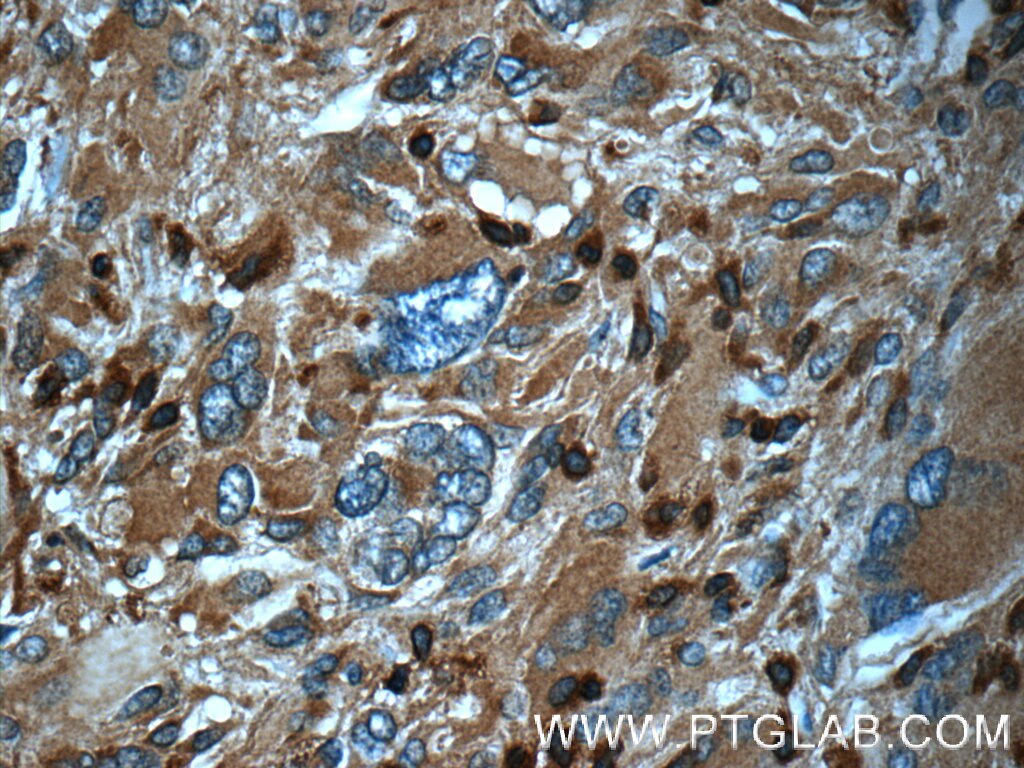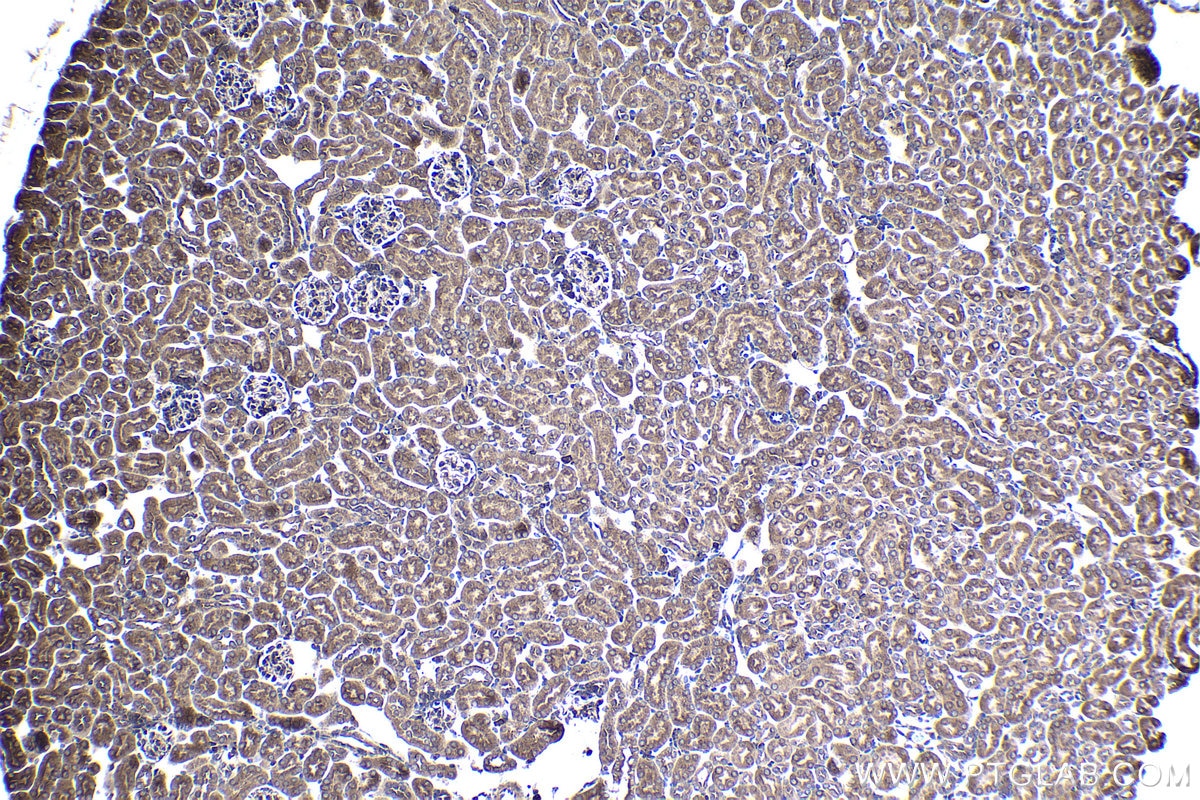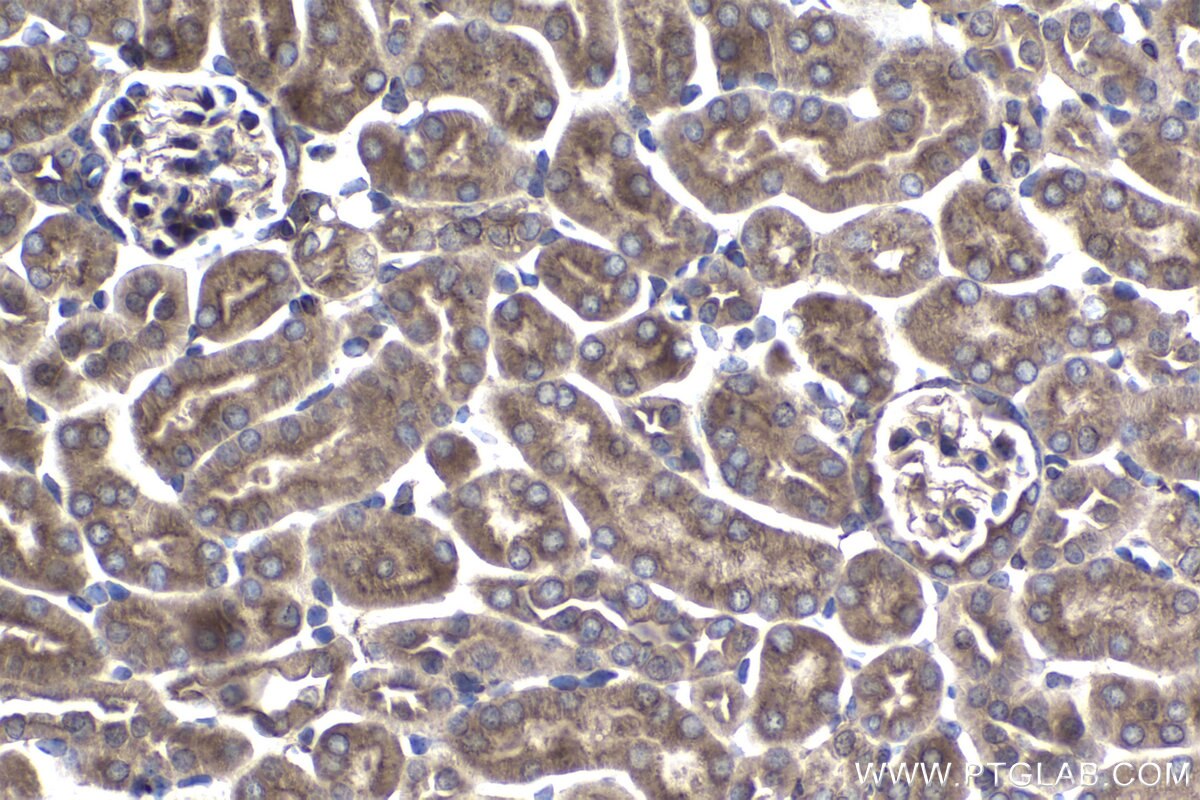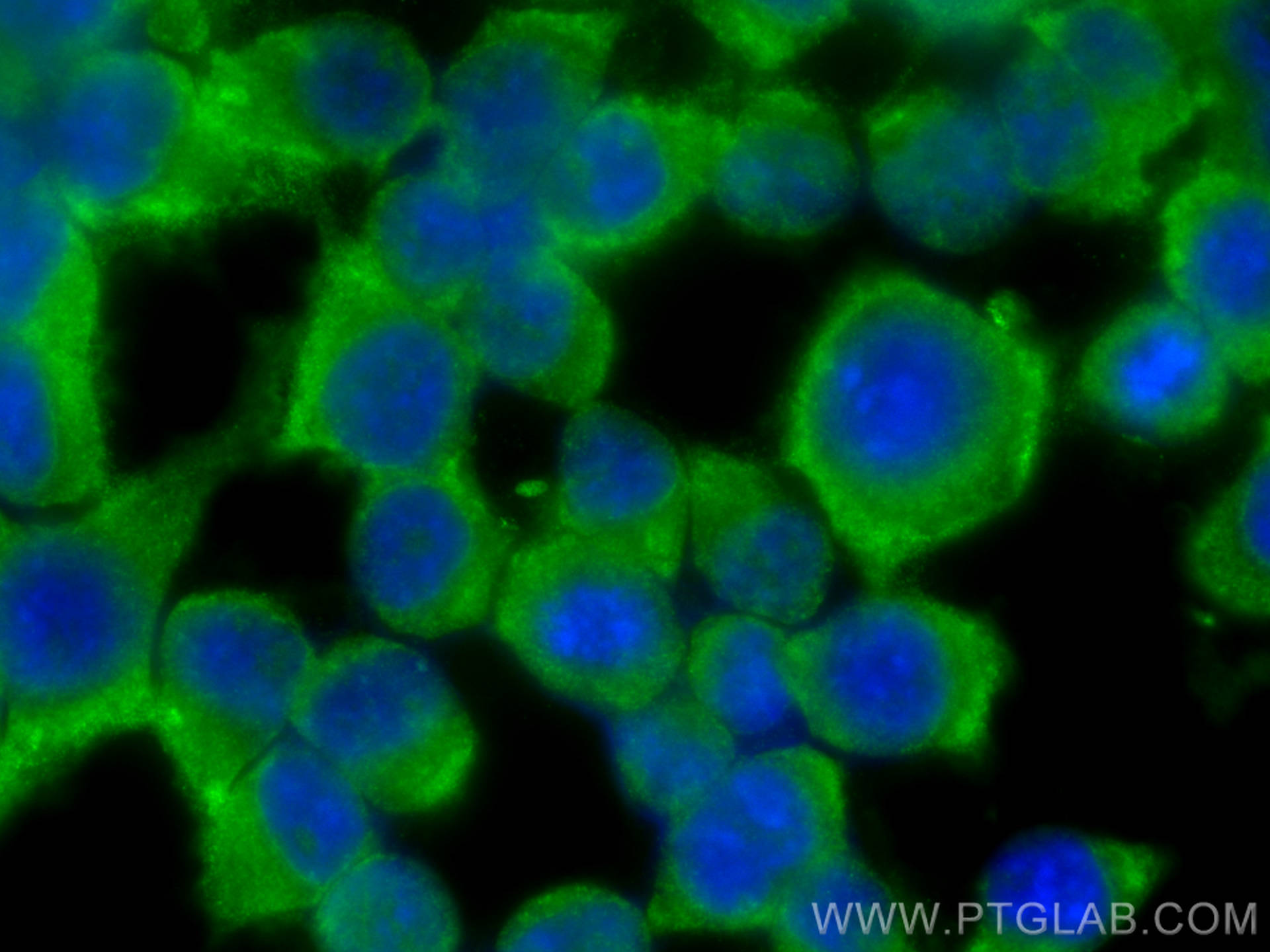ARPC5 Polyklonaler Antikörper
ARPC5 Polyklonal Antikörper für WB, IHC, IF/ICC, ELISA
Wirt / Isotyp
Kaninchen / IgG
Getestete Reaktivität
human, Maus, Ratte
Anwendung
WB, IHC, IF/ICC, ELISA
Konjugation
Unkonjugiert
Kat-Nr. : 16717-1-AP
Synonyme
Geprüfte Anwendungen
| Erfolgreiche Detektion in WB | Maushirngewebe, Maus-Thymusgewebe, Rattenhirngewebe |
| Erfolgreiche Detektion in IHC | Mausnierengewebe, humanes Gliomgewebe Hinweis: Antigendemaskierung mit TE-Puffer pH 9,0 empfohlen. (*) Wahlweise kann die Antigendemaskierung auch mit Citratpuffer pH 6,0 erfolgen. |
| Erfolgreiche Detektion in IF/ICC | Neuro-2a-Zellen |
Empfohlene Verdünnung
| Anwendung | Verdünnung |
|---|---|
| Western Blot (WB) | WB : 1:500-1:1000 |
| Immunhistochemie (IHC) | IHC : 1:250-1:1000 |
| Immunfluoreszenz (IF)/ICC | IF/ICC : 1:200-1:800 |
| It is recommended that this reagent should be titrated in each testing system to obtain optimal results. | |
| Sample-dependent, check data in validation data gallery | |
Veröffentlichte Anwendungen
| WB | See 5 publications below |
| IHC | See 1 publications below |
Produktinformation
16717-1-AP bindet in WB, IHC, IF/ICC, ELISA ARPC5 und zeigt Reaktivität mit human, Maus, Ratten
| Getestete Reaktivität | human, Maus, Ratte |
| In Publikationen genannte Reaktivität | human, Maus |
| Wirt / Isotyp | Kaninchen / IgG |
| Klonalität | Polyklonal |
| Typ | Antikörper |
| Immunogen | ARPC5 fusion protein Ag10144 |
| Vollständiger Name | actin related protein 2/3 complex, subunit 5, 16kDa |
| Berechnetes Molekulargewicht | 154 aa, 17 kDa |
| Beobachtetes Molekulargewicht | 18-20 kDa |
| GenBank-Zugangsnummer | BC057237 |
| Gene symbol | ARPC5 |
| Gene ID (NCBI) | 10092 |
| Konjugation | Unkonjugiert |
| Form | Liquid |
| Reinigungsmethode | Antigen-Affinitätsreinigung |
| Lagerungspuffer | PBS with 0.02% sodium azide and 50% glycerol |
| Lagerungsbedingungen | Bei -20°C lagern. Nach dem Versand ein Jahr lang stabil Aliquotieren ist bei -20oC Lagerung nicht notwendig. 20ul Größen enthalten 0,1% BSA. |
Protokolle
| PRODUKTSPEZIFISCHE PROTOKOLLE | |
|---|---|
| WB protocol for ARPC5 antibody 16717-1-AP | Protokoll herunterladen |
| IHC protocol for ARPC5 antibody 16717-1-AP | Protokoll herunterladenl |
| IF protocol for ARPC5 antibody 16717-1-AP | Protokoll herunterladen |
| STANDARD-PROTOKOLLE | |
|---|---|
| Klicken Sie hier, um unsere Standardprotokolle anzuzeigen |
Publikationen
| Species | Application | Title |
|---|---|---|
Int J Mol Sci Revealing the Therapeutic Targets and Mechanism of Ginsenoside Rg1 for Liver Damage Related to Anti-Oxidative Stress Using Proteomic Analysis | ||
J Neurosci The Proteome of BLOC-1 Genetic Defects Identifies the Arp2/3 Actin Polymerization Complex to Function Downstream of the Schizophrenia Susceptibility Factor Dysbindin at the Synapse. | ||
Pigment Cell Melanoma Res YAP facilitates melanoma migration through regulation of actin-related protein 2/3 complex subunit 5 (ARPC5) | ||
J Reprod Dev MiR-145 regulates steroidogenesis in mouse primary granulosa cells by targeting Arpc5 and subsequent cytoskeleton remodeling | ||
BMC Cancer ARPC5 acts as a potential prognostic biomarker that is associated with cell proliferation, migration and immune infiltrate in gliomas | ||
Heliyon Dapagliflozin impedes endothelial cell senescence by activating the SIRT1 signaling pathway in type 2 diabetes |
